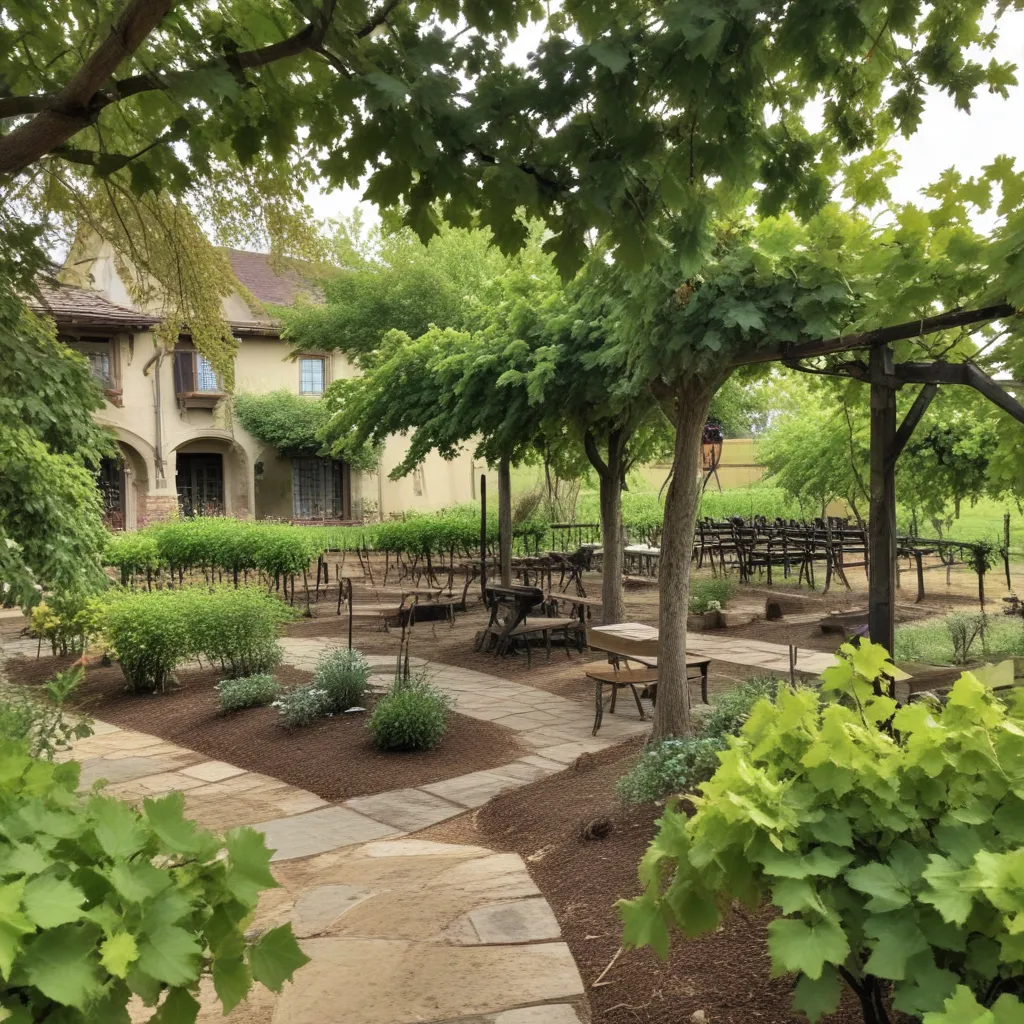
The Wine Garden Inn’s story is inextricably linked to the rich heritage of winemaking. As we craft each vintage, we’re guided by a deep respect for the traditions that have defined this industry for centuries. From the ancient viticulture practices of past civilizations to the pioneering techniques of modern vintners, the evolution of wine is a captivating tapestry that we’re honored to be a part of.
Historical Origins of Wine
Wine’s origins can be traced back thousands of years, with evidence of viticulture (grape cultivation) and vinification (winemaking) practices dating as far back as 6000 BC in regions like the Caucasus and Mesopotamia. As the art of winemaking spread throughout the ancient world, influential wine regions began to emerge, each with their own unique terroir (the environmental conditions that shape a wine’s character).
In the Mediterranean, the Greeks and Romans were instrumental in cultivating prized grape varieties like Sangiovese, Nebbiolo, and Tempranillo, laying the foundation for the iconic wines of Italy, Spain, and France. Meanwhile, the Mosel and Rhine valleys in Germany became renowned for their elegant, acidity-driven Rieslings. These early winemaking traditions would go on to inspire and influence vintners across the globe.
Evolution of Wine Garden Inn
Wine Garden Inn’s own story began with the acquisition of our first vineyard in the 1970s. Captivated by the rolling hills and moderate climate of our region, our vintner founders set out to craft wines that would capture the essence of this unique terroir. Through meticulous vineyard management and innovative winemaking techniques, they gradually expanded our portfolio, while always maintaining a steadfast commitment to preserving the traditions of the past.
One of our earliest and most celebrated discoveries was the potential of the Chardonnay grape in our region. By embracing a judicious use of oak aging and malolactic fermentation, we were able to coax out the grape’s inherent richness and complexity, while still preserving its refreshing acidity. The result was a Chardonnay that delighted both seasoned wine enthusiasts and novices alike, setting the stage for our continued exploration of this noble variety.
Varietal Exploration
As our winemaking journey progressed, we became increasingly captivated by the diverse expressions of the grape. We discovered that even within the confines of a single varietal, the interplay of microclimate, soil composition, and viticultural practices could yield vastly different flavor profiles.
Our Cabernet Sauvignon, for instance, exhibits a bold, concentrated character with notes of blackberry, graphite, and cigar box when grown in the well-drained, gravelly soils of our southern vineyard. However, those same vines planted in the slightly cooler, alluvial conditions of our northern vineyard produce a more elegant, cassis-driven expression, with supple tannins and a lingering herbal finish.
Similarly, our Pinot Noir showcases the sublime terroir-driven nuances that have made this grape a darling of oenophiles worldwide. In the warmer, more sun-exposed blocks of our estate, the Pinot Noir offers vibrant red cherry, strawberry, and subtle spice notes. Conversely, the cooler, fog-influenced parcels lend themselves to a more delicate, rose petal-tinged profile, with a captivating silky mouthfeel.
Sustainable Viticulture
As stewards of this land, we recognize the importance of cultivating our vineyards in a sustainable manner. That’s why we’ve embraced organic farming practices, incorporating biodynamic methodologies that treat the vineyard as a self-sustaining ecosystem. By reducing our reliance on synthetic pesticides and fertilizers, we’re able to promote biodiversity and preserve the long-term health of our soils.
Our commitment to sustainability also extends to water conservation. Through innovative irrigation techniques, such as drip systems and cover cropping, we’ve dramatically reduced our water usage while ensuring our vines receive the precise hydration they need to thrive. Moreover, we’ve dedicated significant resources to the preservation of heirloom grape varieties, ensuring that the genetic diversity of our vineyards remains intact for generations to come.
Tasting the History
As you savor each sip of Wine Garden Inn’s wines, you’re embarking on a journey through time and place. The aromatic profiles, textural qualities, and flavor nuances of our varietals are a direct reflection of the rich viticultural heritage that has shaped this region.
Our Chardonnay, for instance, evokes the sun-kissed orchards and creamy lees-driven character that have defined this grape in Burgundy for centuries. Similarly, the black fruit, graphite, and cedar notes of our Cabernet Sauvignon pay homage to the Bordeaux greats that have inspired winemakers the world over. And in our Pinot Noir, you’ll discover the haunting elegance and finesse that have made this varietal a touchstone of Burgundian viticulture.
But the story doesn’t end there. We firmly believe that the true essence of a wine is revealed when it is paired with the right culinary companions. That’s why we work closely with our in-house culinary team to craft seasonal menus that seamlessly integrate the flavors of our estate-grown produce with the nuanced profiles of our wines. By honoring regional gastronomic traditions and exploring creative pairings, we strive to offer our guests a truly immersive experience that celebrates the rich heritage of both wine and food.
As you embark on your own wine journey with us, we invite you to uncover the stories that lie within each bottle – tales of ancient viticulture, pioneering winemaking, and a abiding commitment to sustainability. For in every sip, you’ll discover the essence of Wine Garden Inn’s unwavering dedication to preserving the rich legacy of this noble beverage.
